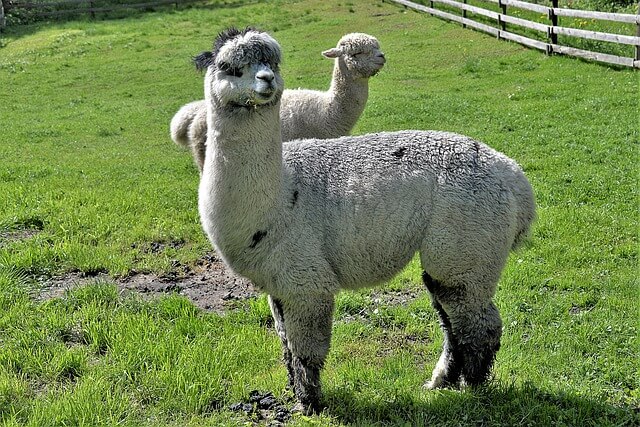Alpacas are one the most interesting animals in the world. Caring for alpacas is not difficult – in fact, they are easy to keep and even easier to maintain. One of their major advantages is the fact that their fleece makes one of the strongest fibers and is used in many industries.
How do you take care of an alpaca?
1. Build a good shelter for them
Though they have the capability to survive cold and harsh environments, it is advisable to build a good and comfortable shelter if you plan on keeping alpacas. During the summer when the sun is scorching hot, and the temperatures are high, provide a shaded area for them.
If you are grazing them, fence the grazing area to keep them safe from predators. You do not know what’s lurking out there.
Always make sure that the shelter is clean.
2. Provide vet care for them
Alpacas also need medical care just like human beings. You will not spend much on their medical bills, but you must be willing to part with some money.
Familiarize yourself with various alpaca diseases and their symptoms. This will help you to know when an animal is unwell and call a licensed veterinarian for a consultation.
They should also be vaccinated twice every year. The vaccine is the same as that used for sheep.
3. Feed them well
For your alpacas to grow strong and healthy, you will have to feed them well and adequately. Typically, they feed on grass and hay, but they also take specialist concentrated foods. Alpaca food is cheap and easily available, so you don’t have to worry about a thing.
You should ensure that they do not feed on poisonous weeds like ragwort while they are grazing. They should also be regularly supplied with clean water.
Most alpaca farms in MD allow farmers who are interested in keeping them to visit and learn more about them.
4. Carefully breed them
An alpaca is ready for breeding at only 18 months old! However, you should be very careful when breeding your alpacas, especially if you choose to do it yourself.
A baby alpaca, which is referred to as a cria, should not be hand-reared unless there is no other option. This is because managing them might turn out to be difficult as they grow older.
5. Shear them once a year
Alpacas should be sheared once a year since they produce fiber. Shearing should happen primarily during the spring to enable them to comfortably deal with the humid summers. This greatly enhances their survival chances even under harsh conditions.
An alpaca shearer who is experienced takes at most 7 minutes to shear one animal. Shearing is a critical maintenance task, and it should never be missed.
Successful alpaca farms in MD are enough evidence that caring for alpacas is easy and rewarding. The benefits are also great and farmers enjoy huge profits. If you can keep a sheep or any other domestic animal, you can also keep alpacas. Trust me, you will love them!
Source: https://www.bhalpaca.com/caring-for-alpacas-5-essential-facts/

